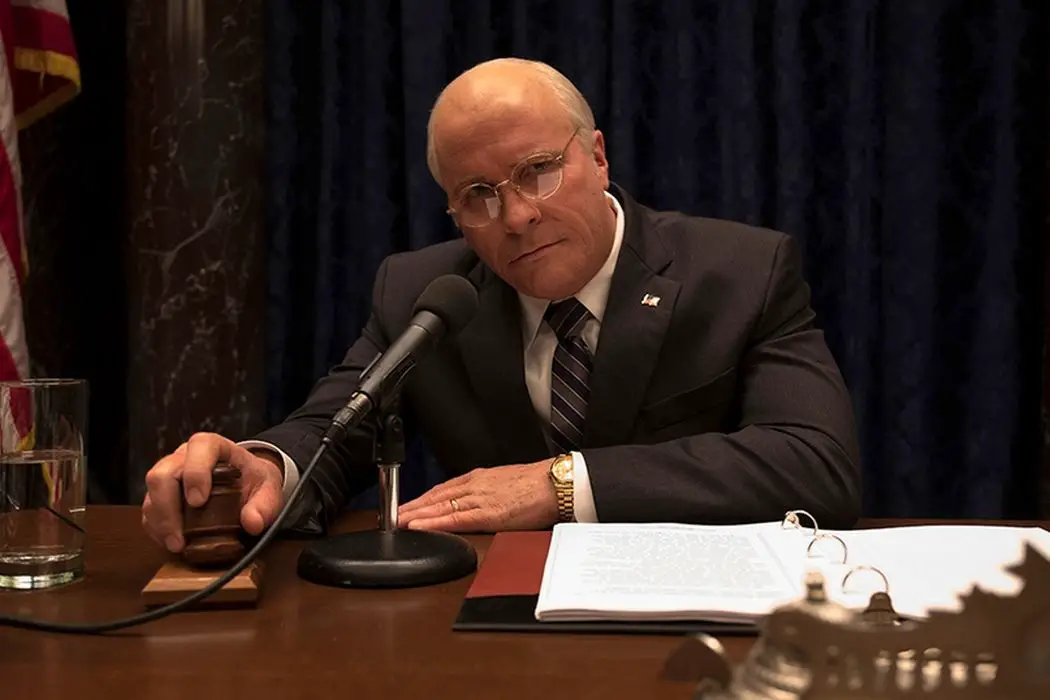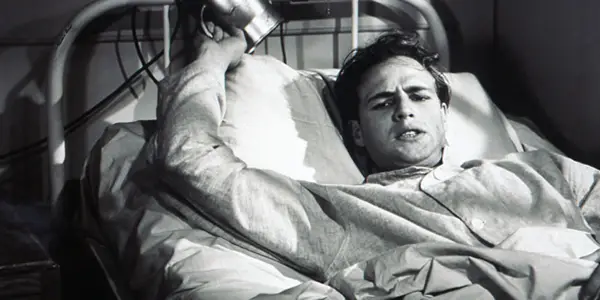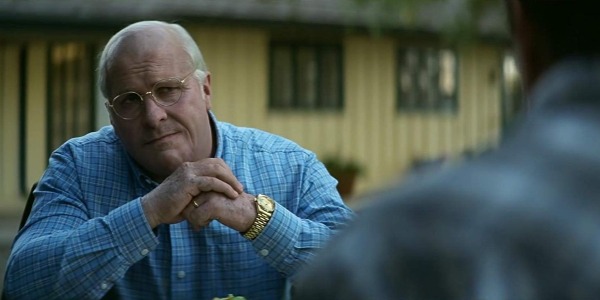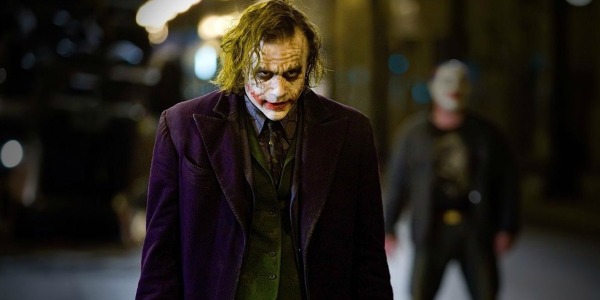Is There Really Still Method In The Madness?

Connoisseur of cereals, advocate of annoying alliterative attempts to attract…
Tattooing Tolstoy excerpts on my chest. Speaking exclusively in HTML. Sipping ostentatiously from a smoothie consisting of blended pages of the OED and the ink of twelve ballpoint pens.
Just some of the things I might be doing while preparing to write this article. As it is, things haven’t got to that stage just yet, although my WordPress pages are looking increasingly bare and I have just purchased a NutriBullet.
On planet Hollywood, however, such efforts would be considered fairly rudimentary. But this wasn’t always the case. ‘Method Acting’, as a concept, has been doing the rounds for a while now. In fact, the Polish-born American actor/director Lee Strasberg – the widely heralded ‘father’ of method acting in America who, in the first half of the 20th century, built on the teachings of the 19th century Russian theatre practitioner Konstantin Stanislavski – claimed it was as old as Western Civilisation itself. Fundamentally, method acting, and the basic principle that governs it – the act of emotionally identifying with a character – is a notion that each and every actor will embrace in their own way.
The Emerging Brand
Then, Marlon Brando came along. By the time he made his feature film debut in Fred Zinnemann‘s 1950 film The Men, Brando was already notable within Broadway circles for his remarkable commitment to character – before going on stage for a scene in which the psychopathic killer he was playing had just emerged from a freezing lake in Maxwell Anderson’s Truckline Café, he would run up and down stairs until he was out of breath and get a stagehand pour a bucket of icy water over his head.
But it was his activity – or lack of, rather – while preparing for his role as an injured war veteran in Zinnemann‘s film that really got the heads of cine-folk turning. It was reported that Brando refused to move from a hospital bed for an entire month prior to shooting, in the hope of organically capturing the mindset of Ken Wilocek: the WWII lieutenant he would be portraying.

Although he did not study with Strasberg – he did with Stella Adler, however; an actor and teacher who had previously studied under Stanislavski – tales of Brando‘s startling dedication were influential in redefining, and popularising method acting to become what we know it to be today – a stigma that has grown to render having teeth removed, eating a live octopus, or sending rats (among other things) to colleagues commonplace.
In fact, such tales are now the stuff of movie folklore. So much so that they often equal, or even eclipse, the lasting impact of the film itself. It’s hard to think of Martin Scorsese‘s classic neo-noir psychological thriller Taxi Driver without also remembering that prior to filming, Robert De Niro got his cab license and spent a month working 15-hour days driving people around New York City. Similarly, Steven Spielberg‘s 2012 epic historical talkie Lincoln is as famous for the refusal of its leading man – the contemporary king of method, Daniel Day-Lewis – to break character for the entirety of the shoot than it is for its Oscar-winning finished feature.
Of course, history will tell us that artists, from all creative walks, have always suffered for their art – the most notorious of these involving a 19th century Dutch painter and some ear severing long before Reservoir Dogs made it a thing. But, in 2019, is there really still a place for method acting in its most extreme form? Does our unquenchable thirst for the outlandish – the more bizarre, the better – mask an underlying toxicity we are failing to address?
Sure, preparation is one thing; but can an actor go too far? I mean, would a surgeon intricately slice themselves open for a game of Operation before heading into theatre? Would someone who works in customer service insist every person they meet scream profanities in their face repeatedly? Or, would a US businessman-turned-politician make his face the colour of a brick in the name of a giant wall?
The answers are no, unlikely, and most definitely.
And yet, why does there seem to be an entirely different attitude towards such activities in the world of acting; a profession that has so much power and influence, and one so heavily prominent in both the press and on our own social media timelines?
A Chene(y) Reaction?
It shows no signs of slowing down, either. From one less-than-popular US Politician to another, Christian Bale has recently generated a hefty slice of public chatter with his striking portrayal of former US VP Dick Cheney in Adam McKay’s Oscar-nominated Vice (released in the UK last month). The film – which explores the modern American political system more widely than the Cheney-heavy trailer might have you believe – has proved divisive with audiences, in no small part due to McKay’s bold, playful, far from subtle anti-Republican agenda. But if there is one thing about Vice that simply cannot be denied, it’s the physical transformation (and scintillating performance) of its leading man.
Bale’s staggering anatomical yo-yoing sees him pack on the pounds (more than 40, in fact) to play a balding Nebraskan 33 years his senior. But for those who have followed Bale’s career with even the smallest degree of intrigue – or, taken 30-seconds out of their day to do a quick Google search – his transition will hardly come as a surprise.

Messing around with his BMI – and probably ignoring any and all advice offered by his GP – is the British actor’s speciality. For his role in David O. Russell’s American Hustle, Bale similarly gained weight to play professional con artist Irving Rosenfeld; while back in 2004, he infamously dropped a staggering 60 pounds to convincingly portray an insomnia-ridden man in Brad Anderson’s The Machinist, (allegedly on a diet of one can of tuna and one apple a day), before regaining the muscle in a matter of months for Christopher Nolan‘s Batman Begins.
Elsewhere, other present-day A-listers – the Jared Letos and Matthew McConaugheys of this world – willingly embrace the extreme, while a number of female actors – Rooney Mara, Charlize Theron, Hilary Swank – are changing a discussion which has for years been defined almost exclusively by a focus on male performers.
A Perilous Example
But, nearly 70 years on from Marlon Brando and his hospital bed, is method acting really something we should continue to place upon a pedestal and celebrate? Or does it set a harmful, dangerous precedent for actors to follow in the pursuit of recognition?
To convincingly portray a former Nazi concentration camp guard on trial for her crimes in Stephen Daldry’s 2008 film The Reader, Kate Winslet went to immense lengths: reportedly speaking with a German accent for the duration of filming (even at home with her children) and completely engrossing herself within the psyche of her character, Hannah Schmitz.
Did it pay off?
By definition, one might say it did. She reaped the tangible rewards: winning the Academy Award for Best Actress the following year. But, rather than the benefit, should we, more importantly, be talking about the cost?
Such was the commitment of Winslet, that it allegedly took her over two months after filming finished to return to a state of what she perceived to be her own psychological normality.
But this is far from an isolated incident, with method acting – and its controversial nature – being continually thrust front and centre of Hollywood media stories. In the very same year The Reader hit cinemas, the movie world was left shocked by arguably the most tragic story to befall the industry in recent times.
Heath Ledger was in the prime of his life; an actor whose career was similarly blossoming, having just given one of the finest on-screen performances of all time as arch-villain The Joker in The Dark Knight. His death was simply devastating. In the aftermath, both the cause and timing of his passing led to public assumption that his preparation for the role – which included isolating himself in a London hotel room for weeks on end – contributed directly to his battle with insomnia and eventual overdose of prescription medication.

A 2017 article published on The Telegraph site claims that Ledger’s sister – and a family-sanctioned documentary from the same year entitled I Am Heath Ledger – rebuffs this notion, however. And while we may never, with any degree of certainty, conclusively know if Ledger’s methods were in any way responsible for his death, the sad reality is that they will probably always be included in the same conversation.
Ledger won a posthumous Oscar for his performance – and rightly so. But, given the correlation between method acting and awards success, have we now reached a point where such endeavours have become detrimental to both the individual and the industry itself? Might we conclude that a culture now exists where actors feel the need to turn to ever more alarming means of preparation in pursuit of going glory, even at the expense of their own long term well-being? And, equally, as viewers, does our own interest in such stories translate as a form of added motivation, or unspoken approval, to engage in self-torture?
Reviewing Ourselves
I’m under no illusion that that this is anything but an innately complex, multi-faceted, controversial issue – one with many possible answers but very few concrete ones. And such a debate, invariably, presents strong arguments on either side of the fence. Meryl Streep, for instance, holds the record for the most Oscar nominations of any actor (an impressive 21) and remains delightfully watchable in pretty much everything she’s in, without the need to even dip her toe in the waters of full-on method. Likewise, for other household names – Tom Hanks, George Clooney – the path towards getting into character, and do so convincingly, is one that seems to bypass the route of extremity almost entirely.
But, at a time when important conversations around mental health, social media, ‘image’ and the influential names fuelling its power are rightly appearing at the foreground of social discourse, it’s certainly worth asking the question as to whether method acting and the message it sends should also be included in such a dialogue?
Do we, as the movie-goers need to reassess our own reaction to extreme method acting – and particularly those involving alarming weight fluctuations or dangerous psychological adjustments? And indeed, should there be a line, a limit, on how far actors should go?
In short, is it time we start flipping the conversation from the method in the madness to the madness in the method?
What do you think about extreme method acting? Does it still have a place in 2019? Let us know in the comments below!
Does content like this matter to you?
Become a Member and support film journalism. Unlock access to all of Film Inquiry`s great articles. Join a community of like-minded readers who are passionate about cinema - get access to our private members Network, give back to independent filmmakers, and more.
Connoisseur of cereals, advocate of annoying alliterative attempts to attract attention, George pretends to know a thing or two about Film & Television. So much so, that he occasionally rustles up some barely-coherent sentences about it. But before you take his words as gospel, it’s probably worth knowing that he considers 13 Going On 30 to be this century’s underrated masterpiece.












